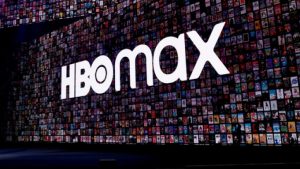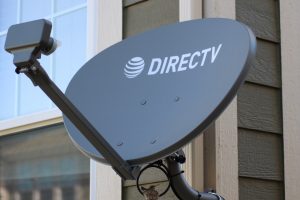
After more than 40 years of operation, DTVE is closing its doors and our website will no longer be updated daily. Thank you for all of your support.
HBO Max at four million subs but WarnerMedia revenues down by almost 25% in COVID-19 fallout

AT&T reported a depressed Q2 with sales down across all of its sectors, but premium OTT service HBO Max seems to be off to a solid start with a little more than 4 million subscribers.
The streamer launched in May, and while the company did not give explicit subscriber numbers, AT&T CEO John Stankey did say that HBO Max and the HBO linear channel had a combined 36.3 million subscribers at the end ofJune. This is up from 34.6 million at the end 2019.
Stankey said: “One month after launch, HBO Max had about three million retail subscribers, and 4.1 million subscribers had activated their Max account. Of those, more than one million were wholesale subscribers through AT&T.”
Through distribution deals with a number of major pay TV operators, subscribers to the HBO linear channel also receive complimentary access to HBO Max, but the CEO admitted that there is still work to be done in order to better inform customers of what is available to them.
He continued: “We’re seeing more rapid activation with subscribers who are active users of the HBO digital offers, but we still have work to do to educate and motivate the exclusively linear subscriber base, and we’ll continue to work with our wholesale partners to drive these activation rates.”
AT&T customers who have the service bundled in with their mobile plans are producing “a positive pull-through that’s at or better than the wireless unlimited plan step-up assumptions” the company had previously given.
In his final comments on HBO Max, Stankey addressed its lack of availability on Amazon devices, suggesting that the issue was not on their end. He said: “We’ve tried repeatedly to make HBO Max available to all customers using Amazon Fire devices, including those customers that have purchased HBO via Amazon. Unfortunately, Amazon has taken an approach of treating HBO Max and its customers differently on how they’ve chosen to treat other services and their customers.”
There was no mention of Roku, where HBO Max is also unavailable.
It is believed that both parties want HBO Max to sit within their respective channels section, while AT&T is pushing for HBO Max to be its own standalone app.
WarnerMedia takes Covid dip
WarnerMedia – the unit which houses HBO – saw Q2 operating revenue at US$6.8 billion. This was a year-over-year drop of 22.9%. Operating income was at US$1.9 billion, down 18.4% year-over-year.
CFO John Joseph Stevens said that the coronavirus pandemic had cost WarnerMedia US$1.5 billion in lower sales, with ad revenue at Turner dropping by 37% to US$796 million.
He said: “The COVID impact is most evident in our WarnerMedia results. Altogether, COVID had about $1.5 billion revenue impact in the quarter. Lower expenses resulted in a favorable impact on EBITDA. The biggest news of the quarter for WarnerMedia was the successful launch of HBO Max.”
 Of the pandemic, CEO Stankey said: “We’re planning and operating under the assumption that significant accommodations for COVID will be the business norm well into next year. The unfortunate reality simply sharpens our focus and strengthens our resolve on the business transformation path we chartered and the investment focus we’ve adopted.”
Of the pandemic, CEO Stankey said: “We’re planning and operating under the assumption that significant accommodations for COVID will be the business norm well into next year. The unfortunate reality simply sharpens our focus and strengthens our resolve on the business transformation path we chartered and the investment focus we’ve adopted.”
Stankey confirmed that the company will resume production on shows and movies within WarnerMedia – including originals for HBO Max which are “critical” to reach its 2021 target – next month, but that “it’s going to take time to return to our February production levels.”
AT&T continues to shed TV customers
Elsewhere, customers continue to flee from AT&T’s non-HBO video services.
It reported a net loss of 945,000 video customers with 886,000 leaving its Premium TV category including DirecTV, U-verse and the AT&T TV online service. A further 68,000 customers left cord-cutting streamer AT&T TV Now.
This loss was attributed to price increases and the reduction of promotional-pricing deals.
Overall, the company ended the quarter with 18.4 million video customers – down from over 25 million in mid-2018.



